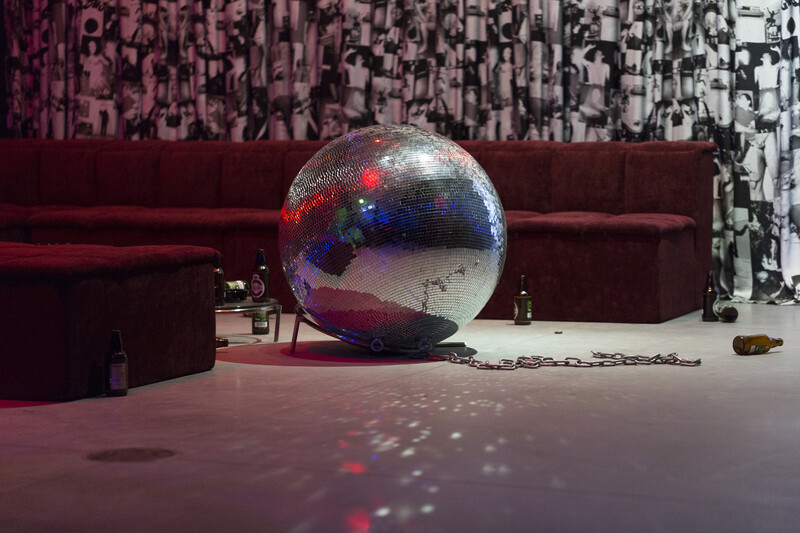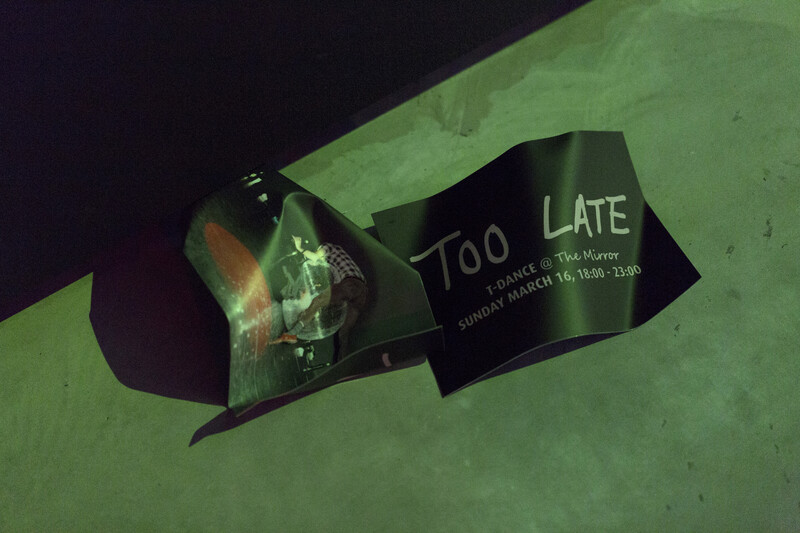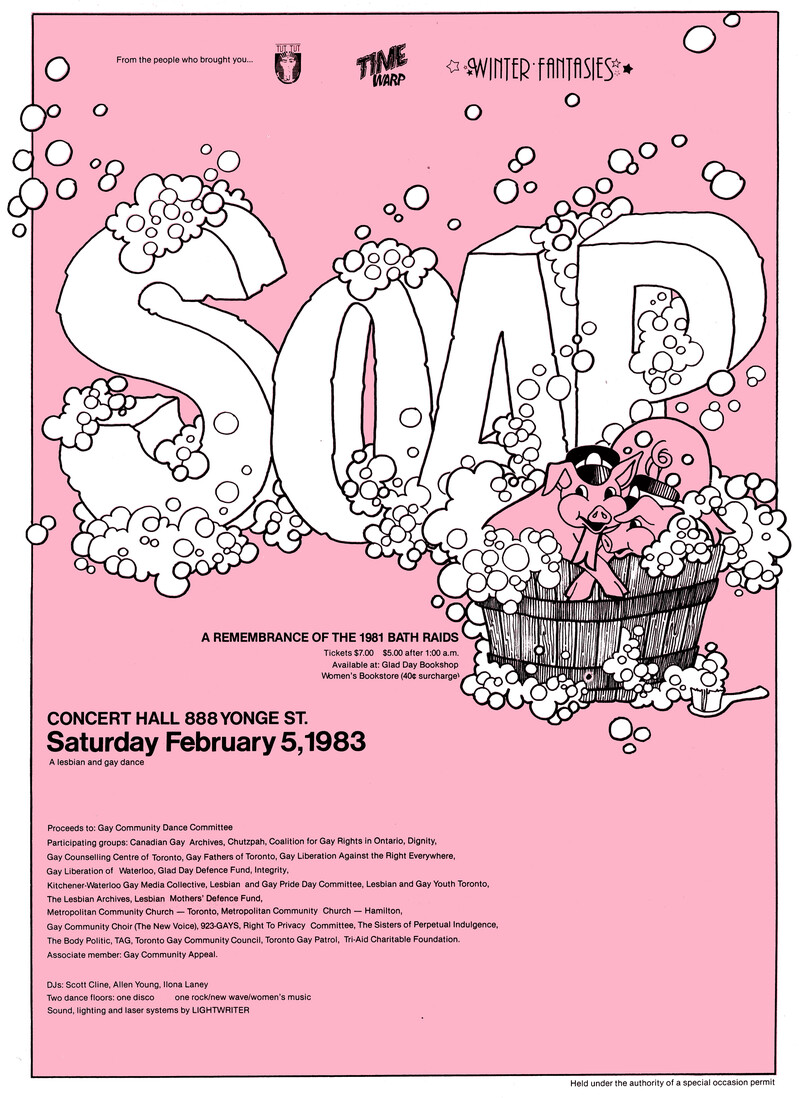- 14.0Cover
- 14.1How to Read this Broadsheet
- 14.2Charming Life/Troubling DeathShan Kelley
- 14.3"Every Death a Policy Failure": The Other Public Health CrisisMatthew Bonn
- 14.4Queer Collectivity in the Echoes of the Dance FloorCraig Jennex
- 14.5Nowhere to IsolateRasheen Oliver, Kimone Rodney, Mya Moniz
- 14.6Questions Of, For & About ConsentWhat Would an HIV Doula Do?
- 14.7Puerto Rican Harm Reduction is EverywhereTamara Oyola-Santiago
- 14.8La Reducción de Daños de Puerto Rico está en Todas PartesTamara Oyola-Santiago
- 14.9An Army of the Sick Can’t Be DefeatedBrothers Sick
- 14.10Gesture toward JusticeFady Shanouda, nancy viva davis halifax, Karen K. Yoshida
- 14.11Start Slow, Feel the Vibrations in Your GutMourning School
- 14.12A Good DeathSarah Bird, Rayne Foy-Vachon, Kayla Moryoussef, Chrystal Waban Toop
- 14.13The Corpses of the FutureLynn Crosbie
- 14.14On the Incommensurability of Police and Harm ReductionJeffrey Ansloos, Karl Gardner
- 14.15Crises of Visibility: The Activism of MDsEmily Cadotte
- 14.16Glossary
Queer Collectivity in the Echoes of the Dance Floor
- Craig Jennex

I cautiously move heavy chains that hang over a doorway and peer inside at the dim space beyond, squinting to see what I’m getting myself into. It’s so dark in there that I cannot tell if anyone else is inside. I shuffle forward, with my hands in front of me, attempting to feel my way into the space. The anxiety I feel walking into the darkness is intensified by my inability to speak the language of the country I am in. If anyone is inside, or comes in after me, I will simply smile and nod like I have been since I arrived here months ago.
As my eyes adjust, I start to get a better sense of the room. To my right, there’s an unstaffed bar littered with empty beer bottles and drink glasses, depleted vials of poppers, and heaps of cigarette butts overwhelming small ashtrays. Ahead of me, in the far corner of the room, a disco ball has fallen from the ceiling and shattered next to a dirty red sofa and some small coffee tables. Broken glass and pieces of mirror glisten on the floor. Barely-illuminated, larger-than-life images of naked go-go boys hang on the walls that surround me. I step on a crumpled poster, pick it up off the floor, and flatten it enough to read the text: “TOO LATE T-DANCE @ The Mirror. Sunday, March 16, 18:00-23:00.” It’s mid-May; I am almost two months late for the party. All that remains are traces of the night. The jangling chains that I left in my wake as I entered the room finally still, and the calm, ethereal sounding electro folk song that has been playing fades to silence. In the silence, I hold my breath and wait. A few seconds later, the same song begins again.
Jarringly, two middle-aged white women push through the heavy chains behind me. The swinging chains are loud but are overshadowed by the sounds made by the women themselves—they hold onto each other and giggle as though they are being pushed through a haunted house. They holler at each other but I don’t know what they’re saying. One notices the images of the go-go boys on the wall and shrieks. Her friend takes a photograph—the bright flash from her camera fills the space; they both laugh. Then they turn, walk down a small hallway and back through the heavy chains. They return to the brightly lit lobby of Oslo’s Astrup Fearnley Museum of Modern Art. I am once again alone, lingering in the empty bar space that is at once foreign and yet somehow familiar.
This sequence happens often: strangers tentatively enter the space, look around for a minute or two, get the gist of the installation, giggle, shrug, or scoff, and then leave again. But I sit in the space for over an hour. Some of the visitors notice me in the dark and some do not. One man points at me and whispers something to the person he is with. I get the sense that they think I’m part of the installation. One of the other installations in this exhibition features a live performer, so their interpretation of me is understandable. In this setting, I play the role of a real live gay man who couldn’t find someone to go home with when the dance ended months ago. In the space, I am stuck in time, too late for the party and the experiences I may have had there but refusing to accept it. They watch me, alone and still, basking in the echoes of what I imagined I missed and what I continue to miss.
I stay because I find the space inviting. I’ve been in Oslo for months now but have not built the courage to visit one of the city’s queer bars alone. Being in this space feels like a step in the right direction—today, this artists’ rendering; tomorrow, a real gay bar. The song, which I’ve heard repeat dozens of times by this point, also adds to the comfort and familiarity of the space. It’s in English and repetitive. Before long I know the song structure and lyrics and each additional hearing confirms its familiarity. But this familiarity is framed in its inaccessibility, as the refrain keeps reminding me: “it’s over, it’s over, it’s over, it’s over…”
When I eventually leave the installation and find my way to the gift shop, I learn that the song is entitled “Too Late.” It’s performed by Michael Elmgreen and Ingar Dragset—the two artists whose exhibit Biography is on display at the museum—along with Simon Fujiwara (who also goes by the moniker “Asia Today” for solo and collective musical projects). Like most of the other elements of Biography, the queer sensibility of the song is not subtle. Lyrics sung by masculine-coded voices reference “college boys…quoting gender theory,” the “salty taste / left in after giving head,” and evoke golden showers twice in the opening verse. The song references queer potential in public experiences of sex and sex work.
The lyrics of the song suggest the impossibility of a return to queer pasts. “It’s over,” the lyrics repeatedly contend, and we are too late. What’s worse, the vocalists tell us, is that “you thought it’d never end,” making the impossibility of return all the more difficult to handle. The lyrics are captivating—a nostalgic reflection on the complex opportunities that blossom in a dark room—but it seems to me that the queer work being done by this song is most salient in specific musical details of rhythm and musical temporality. The song—and the installation it is part of—plays with listeners’ sense of time and seems to open up the possibility of alternative temporal experiences. It is not simply that we are “Too Late,” in arriving at the bar long after the party has ended, but that the desire to linger in what has passed is made impossible by the musical structure of the song.
There are multiple rhythmic devices used to pull listeners in, attempting to lull them into a state of nostalgic longing in the present, and then immediately disallowing that possibility. Throughout the piece, vocal lines enter a full beat before the phrase begins, serving as an anacrusis (or “pick up”) into the section that follows. As a result, and despite the blasé delivery of the lyrics, the vocal lines have the effect of moving the song—and the listener—forward rather deliberately. Oddly-framed musical phrases mean that listeners’ efforts to luxuriate in each verse are frustrated by the entrance of the chorus. While the verses are framed in five-bar phrases, the chorus unfolds in more conventional groupings of eight. While the choruses might, in this respect, seem like an act of temporal normalization, the addition of two bars of 6/4 time elongates the section’s musical temporality and simultaneously shakes the foundation of 4/4 time to which listeners have become accustomed. You can linger, all of these choices seem to suggest, in your desires to access this past—but you can never get there. So what’s the point?
The song “Too Late”—and its complicated temporality—is emblematic of the broader musical experiences that allow us to linger in and alongside queer musical pasts. As it makes clear, we may be too late—that is, in fact, the primary meaning of the song and the installation in which it is performed—but we are here now, and we can be inspired by listening closely to and basking in what is left behind. As we experience the present and imagine the future, the echoes of the past matter.

Queer dance floor experiences of the past can continue to offer possibility in the present. Indeed, when we embrace music’s ability to elicit collective experiences of lingering, we bind ourselves to historical echoes and the individuals moved by them in the first place. One thing that makes these experiences of dance floor bliss so profound is that they are simultaneously individual and collectivizing—they feel so personal yet they necessarily tether us to others. Perhaps contemporary queerness is less about an identity claim or a series of acts in the present—maybe it’s about how we linger in and with the queer past. Perhaps it is this history and our ongoing orientation to it that allows us access to the radical potential of queerness today.
Outside of the art gallery, there are multiple contemporary experiences of musicking that challenge the normative framing of the past as distant, distinct, and fruitless; these experiences re-embrace past dance floors as sites of queer world-making. In Toronto, Balls Deep Disco at the Black Eagle returns us to the dancing and cruising practices of the past under the guidance of resident DJ Kris Steeves. Other local dance parties embrace the queer dance floor as a site of collective potential with a vital performative force. Crip Rave, created by Renee Dumaresque and Stefana Fratila, prioritizes dance floor access and bliss for crip, disabled, deaf, mad, and sick individuals. Strapped, a dance party that centres women of colour and non-binary people of colour, worked with Toronto’s Club Quarantine to move dance parties online at the start of the pandemic. As Strapped organizer Marisa Rosa Grant tells Toronto Life in 2020: “What I love about the queer community is that we always find a way to party.”
These events reference histories of queer dance and collective formation while simultaneously positing a better, queerer future. They remind us that queerness, as a concept, is at its most promising when it is embodied, collective, and expanding—when it signals something not-yet-here, but something worth reaching for and moving toward. This is why dance floor collectivity is so important both in a broad sense—in creating queer possibility within a social world that is conditioned by cis- and hetero-normativity—and within LGBTQ2+ communities that often mimic the very exclusions we repudiate in broader society. The queer dance floor can allow participants access to feelings, possibilities, and fleeting moments of collective bliss that can radically reshape our understanding of the world and our place within it.
Another Toronto-based dance party similarly turns to the past to imagine a queerer future. SUDS—a dance party inside a bathhouse—references the popular Continental Baths in New York City and the gay bathhouses of Toronto’s past in its advertising. SUDS is also reminiscent of the queer dance party SOAP, hosted by Toronto’s Gay Community Dance Committee (GCDC) in 1982 one year following the infamous Toronto bathhouse raids. Thousands attended this fundraising dance party in the early 1980s, which served as both an opportunity to dance and an opportunity to remember—and resist—organized police violence and harassment. Contemporary dance parties like SUDS encourage participants to embrace dance and sex as continued processes through which queer connections and collectives are formed. SUDS is not just an opportunity to dance and cruise and be with others, it’s also an opportunity to linger—to bask in the echoes of the queer past—and to imagine what is possible in the fading light of the past and present.

A few weeks after visiting Elmgreen and Dragset’s Biography exhibition, I finally mustered the courage to visit a gay bar in Oslo. Just before midnight, I walked to the venue that I had researched online for months. I’m not sure if the persistent glow of twilight in the city in early July made me more or less confident as I walked through the city streets alone, but it certainly recalled my experience at the museum of moving from the brightly lit straight world into a dark space rife with queer possibilities. After months of anticipation, I finally arrived at a gay bar.
Ultimately, I didn’t stay long. The drinks were horrifically expensive and most of the gorgeous, tall, slender men on the dance floor showed little interest in the chubby Canadian smiling and nodding awkwardly in the corner. But for a few songs, I joined the dance floor collective and moved to the music. In the moment, I considered myself lucky that queer dance practices seldom require dance floor partnerships—that the dance floor can swallow up individuals into a collective body.
Despite my disappointment that the venue didn’t live up to the high hopes I had fabricated for months prior, this brief moment on the dance floor reminded me that I’m not too late. We are not too late. The possibility of queer bliss on the dance floor has existed for generations and will continue for as long as we recognize the collective potential of such sites. Lingering, in this case, is not an attempt to reconstruct and return to a past but a practice through which we can remember and revive the experiences that existed therein. Lingering on the queer dance floor creates the conditions for queer kinship: an opportunity to convene in embodied and affective ways, to move to the pulsating rhythm on and of the dance floor, and to connect—across time—to queer movements of the past.
See Connections ⤴